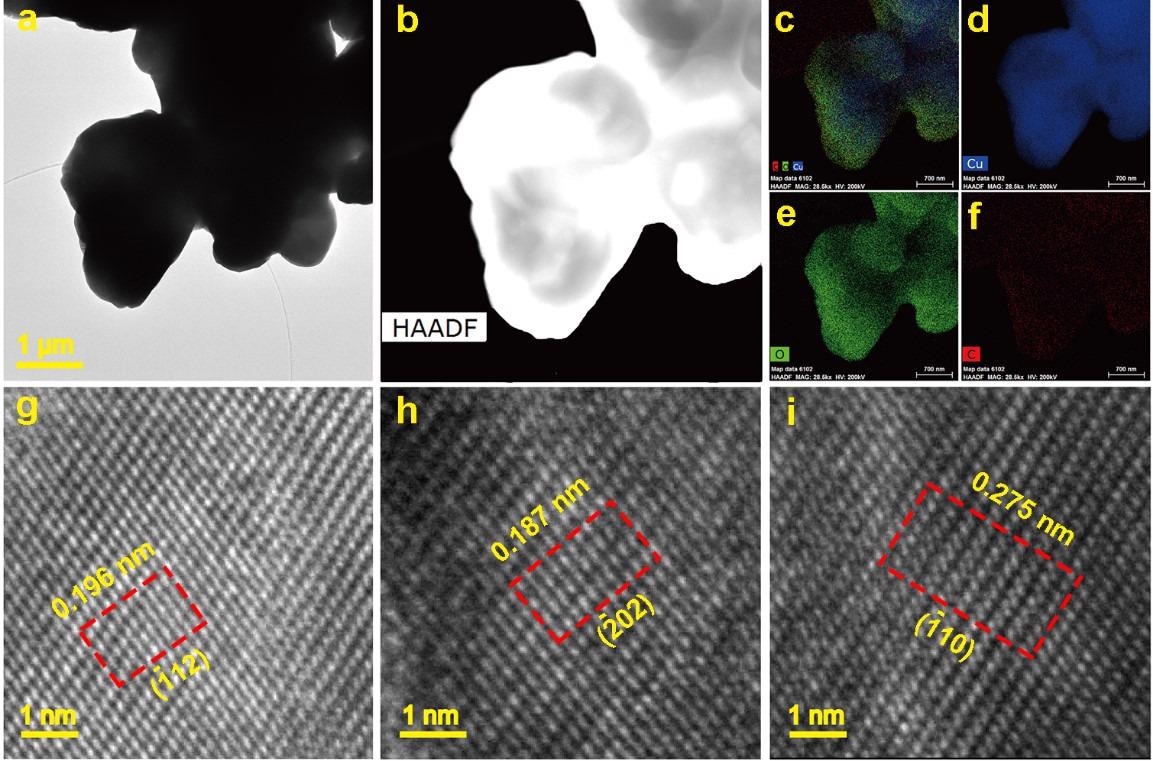Mar 30 2021
A newly developed, highly active carbon framework-encapsulated copper oxide Fenton-like catalyst exhibits the potential to produce singlet oxygen and free radicals by activating peroxymonosulfate (PMS), thereby achieving efficient disintegration of tetracycline pollutants in water.
 (a) TEM image, (b-f) mapping images, (g-i) HR-TEM images of CuO@C-550. Image Credit: Dandan Yang.
(a) TEM image, (b-f) mapping images, (g-i) HR-TEM images of CuO@C-550. Image Credit: Dandan Yang.
The new catalyst was recently formulated by a team of scientists headed by Prof. Lingtao Kong from the Institute of Solid State Physics of the Hefei Institutes of Physical Science.
Tetracycline (TC) is a type of universal antibiotic featuring a naphthacene structure. It ranks second in the world when it comes to production and use and cannot be absorbed fully by animals and humans.
Nearly 75% is excreted through urine and feces in the form of mother or metabolite progeny. This leads to environmental pollution and ultimately endangers ecological safety and human health. TC exhibits poor biodegradability and a stable chemical structure, which make it challenging to eliminate through traditional methods.
As part of this study, the team developed carbon framework-encapsulated copper oxide particles (CuO@C-550) and used them as a heterogeneous Fenton-like catalyst to activate PMS to disintegrate TC.
Within 40 minutes, the removal rate of TC (20 ppm) reached 99.8% and the performance was good in a wide pH range (of 3 to 9). The addition of several coexisting ions (H2PO4−, Cl−, NO3−, HCO3−) had virtually no impact on the degradation system.
Following five cycles, the removal rate of TC was still higher than 85%, and there was only minimal loss of copper from the catalyst, which points toward the good stability of the material.
“Quenching experiment and EPR test proved that CuO@C-550 activated PMS to produce active substances such as·OH, SO4−·and 1O2. Besides, we speculated the reaction mechanism based on the effective cycle of Cu+/Cu2+/Cu3+.”
This study has successfully overcome the drawback of metal loss in traditional Fenton-like catalysts. Thus, the researchers have solved the conventional Fenton reaction’s constraint of pH and inorganic ion interference, thus offering a new profile for the deep elimination of refractory organic pollutants in water.
This study was financially supported by the National Key Research and Development Program, the National Natural Science Foundation of China, and the Anhui Provincial Major Science and Technology Project.
Journal Reference:
Yang, D., et al. (2021) Carbon framework-encapsulated copper oxide particles to activate peroxymonosulfate for the efficient degradation of tetracycline. Applied Surface Science. doi.org/10.1016/j.apsusc.2021.149424.